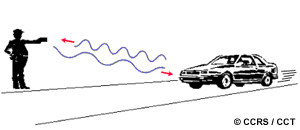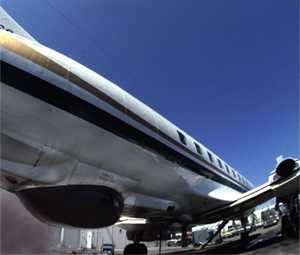
Natural Resources Canada > Earth Sciences Sector > Priorities > Canada Centre for Remote Sensing
Imaging and Non-Imaging Systems
5.1 Imaging and Non-Imaging Systems

Measuring vehicle speed |
Radar systems may or may not be imaging systems. A well known example of a non-imaging system is a doppler radar
system. These systems are used (for example) to measure vehicle speeds by measuring the frequency, or doppler shift between transmitted and return signals.

Plan position indicator (radar) |
Plan position indicators (PPI) produce a type of image. These radars use a circular display screen to indicate objects surrounding the rotating antenna. They are commonly used for weather monitoring, air traffic control and navigational systems. The spatial resolution of the view map of the area under surveillance is too coarse to be used in remote sensing applications.
Radar imaging systems used in remote sensing applications consist of an air or space borne antenna. These antennas transmit and/or receive radar signals in order to produce imagery at a fine enough resolution for image interpreters to identify physical features on the Earth's surface.

Airborne antenna |
Black bulge under fuselage (radome)covers the radar antenna.
| 